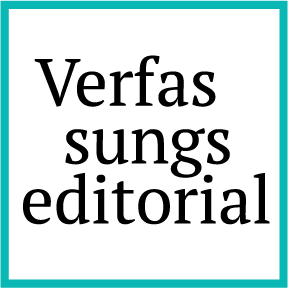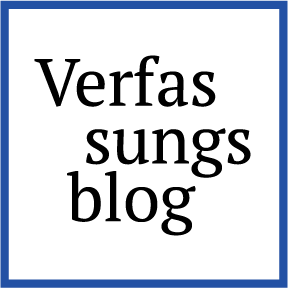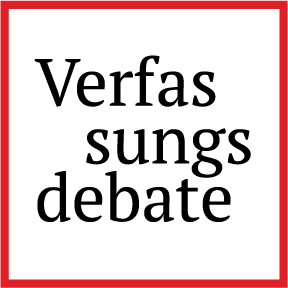Litigating Over Independent Media
On the Direct Effect of the Right to Independent Media as Enshrined in the EMFA
Since the European Media Freedom Act (EMFA) fully entered into force on August 8, 2025, the question arises: how far can it go in securing independent media? The EMFA sets out extensive safeguards to counter the politicisation of both private and public media. It aims to increase transparency in ownership and financing, and to strengthen protections for editorial independence and journalists’ safety.
However, its potential reaches even further. I argue that Article 3, which establishes a right to independent media, imposes concrete obligations and confers enforceable rights, rather than just setting out political objectives. This opens the door for individuals to bring cases before national courts to challenge violations of media pluralism without having to rely on the EU Charter of Fundamental Rights. Such litigation could be directed both against private media companies (horizontal direct effect) and against the Member States (vertical direct effect).
The EMFA’s adoption: A turning point for media independence
The adoption of the EMFA in 2024 was a direct response to growing threats to media independence.
Ownership concentration, political and commercial influence, and attacks on journalists are problems found across many EU countries, as evidenced by the Media Freedom Index and in the Liberties Media Freedom Report. Moreover, the rapid rise of AI-generated content and misinformation on social platforms puts additional pressure on pluralistic information environments. As the Action Plan to Support Recovery and Transformation highlights, quality journalism is a vital counterweight.
At the same time, EMFA has the potential to prevent media capture. Media capture – the takeover of media by governments or actors close to power – has its roots in the early 2000s, when foreign media investors withdrew from Central and Eastern Europe and state-controlled or politically aligned capital stepped in. This shift created fertile ground for the rise of authoritarian or illiberal politicians and later entrenched their power, as the examples of Fidesz in Hungary and Law and Justice in Poland clearly demonstrate.
The EMFA seeks to respond directly to these threats by introducing a set of safeguards. It protects journalists and their sources from the use of unauthorized surveillance (Article 4). Measures to safeguard editorial independence and ensure the financial transparency of public service media are introduced (Article 5). The Regulation also establishes a special regime for media in content moderation procedures, granting recognized media the right to receive reasons for the removal of their content before, rather than after, such action takes place (Article 18). The EMFA also sets out extensive rules on assessing media market concentrations that could undermine pluralism (Article 22).
The EMFA and its litigating potential
Despite the extensiveness of the EMFA’s safeguards, no exhaustive list can address all threats to media independence. Moreover, there is already some delay, if not outright reluctance, on the part of Member States to ensure the effective application of the EMFA. For EMFA to be fully effective, many key provisions – including Article 4 on the protection of sources and Article 5 on the independence of public service media – need substantial adjustments in national laws to ensure alignment with EU requirements. Hungary even went so far as to file an action for annulment of the Regulation. The answer to these challenges can, however, be found within the EMFA itself: it may also serve as a legal basis for litigating media independence, potentially to a broader extent than is explicitly stated in the Regulation.
Article 3 of the Act states that Member States:
“Shall respect the right of recipients of media services to access a plurality of editorially independent media content and ensure that framework conditions are in place in line with this Regulation to safeguard that right, to the benefit of free and democratic discourse”.
This provision, insofar as it confers a right to access a plurality of editorially independent media content, appears to satisfy all the conditions for direct effect and to be directly enforceable before national courts: it’s unconditional, meaning it leaves no discretion to Member States. Moreover, it’s sufficiently clear especially when interpreted alongside other EU instruments, such as the Commission’s recommendations on editorial independence and CJEU case law. Its precise scope will likely be refined through future jurisprudence. In other words, any media recipient – essentially any natural person – could bring a claim arguing that their right to access a plurality of independent media was violated, alleging an infringement of Article 3 of the EMFA.
What is particularly important in this context is that provisions of EU regulations that have direct effect function in two dimensions: vertically, as they can be enforced by individuals against the state and horizontally, as they can also be invoked by individuals against other individuals. As the CJEU has confirmed, the fact that a provision is directed to Member States does not exclude its horizontal effect. From its case law, it follows that the application of certain provisions “in judging all legal relationships,” including horizontal ones, has been motivated by the need to ensure the effectiveness of EU law. It also makes clear that not only the functioning but also the nature and purpose of the provisions must be taken into account. Article 3 of the EMFA would not be effective if private actors were excluded from its scope, as they play a vital role in shaping the media landscape.
This means that such claims can be directed against private media companies – for example, for concentrating ownership and aligning editorial policies with political interests, systematically excluding opposition or minority voices from coverage, or allowing commercial sponsors to influence and suppress critical reporting – practices that remain more common than they should be.
Article 3 of the EMFA could also be invoked against Member States for breach of EU law, giving rise to eventual claims for damages. This may include both failures to observe the EMFA and other forms of undue state interference in the media sector, as the “right to access a plurality of editorially independent media content” has wider scope than what is expressly stated in the Regulation.
Such litigation can have far-reaching consequences, as its effects extend beyond the individual claimant. It can be used to ensure the unhindered functioning of the media, as well as to safeguard the public’s access to reliable and independent sources. Moreover, these cases often involve the possibility of a preliminary reference, allowing the CJEU to establish standards for media independence applicable across all Member States.
The idea for strategic litigation based on directly applicable provisions of EU (Community) law is not new. Consider the case of Gabrielle Defrenne, a Belgian stewardess who, in the late 1960s, sued her employer on the grounds that paying her less than her male colleagues violated Article 119 of the Rome Treaty, which at that time guaranteed equal pay. The case eventually reached the Court of Justice, which confirmed – despite opposition from the other parties to the proceedings – that Article 119 of the Rome Treaty could indeed serve as a legal basis for her claim. Her litigation was not intended merely to remedy her individual situation: the persistence in bringing cases with the potential to reach the Court of Justice, included against the Belgian State combined with the legal strategy built around Article 119 of the Rome Treaty, reflected a clear willingness to create an impact in order to improve the working conditions of female workers.
In fact, the very doctrines of direct effect and primacy, which make such litigation possible, were developed in cases where citizens asserted their rights through Community law claims.
Although EU (and Community) law has long been mobilised, the EMFA creates new opportunities. Fundamental rights litigation based on EU law is notoriously difficult. As the Charter of Fundamental Rights applies only within the scope of EU law, Charter-based arguments can be advanced only where a link to another provision of EU law is established in the case. As John Morijn put it, the Charter often functions like a “remora fish”, which travels by attaching itself to larger fish. While successful Charter-based cases exist – e.g., Coman, Pancharevo, or Mirin – they remain relatively rare, especially in the field of media freedom.
To illustrate, a claimant wishing to invoke Article 11 of the Charter, which protects the freedom of expression and freedom and pluralism of the media, would first have to identify another relevant provision of EU law – a task that is far from straightforward. By contrast, Article 3 of the EMFA could be directly enforceable and has an exceptionally broad scope, thereby virtually eliminating the difficulties associated with Charter-based litigation.
Putting ideas to the test
There are possible obstacles that must be considered. The first question is: at what point can we claim that the right to access pluralistic and independent media has been breached? In the context of private actors, this requires assessing whether their conduct – such as ownership concentration, editorial alignment with political or commercial interests, or systematic exclusion of certain voices – effectively restricts pluralism and independence in a way that undermines the right. Establishing such a breach would thus involve demonstrating that the company’s practices have a tangible impact on the diversity of information available to the public. In the case of Member States, the threshold is shaped by the CJEU’s case law, which requires the breach to be “sufficiently serious”. Interference with a single outlet in an otherwise healthy media landscape might not be considered overstepping – but what about two or three?
Another challenge is whether the CJEU will confirm that Article 3 of the EMFA has direct effect. We might have an answer sooner than expected and by the most unlikely actor to bring a case. In case C-843/24, brought by Viktor Orbán against 24.hu, an independent online news portal, the Hungarian court referred three preliminary questions that appear to touch on this issue. If the Court does not decide it there, another case will surely arise.
These uncertainties do not change the fact that Article 3 might offer a new legal avenue for safeguarding media independence, whether against states or private actors. This is where strategic litigation comes in: its main goal is not to protect the interests of individual claimants, but also to secure media independence more broadly and guarantee the public’s access to pluralistic outlets. It is now up to civil society to test this potential in practice.



